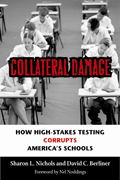San Francisco Chronicle: One for the books — tutoring gets outsourced
Fifth-grader Kevin Chen studies math in his living room in Alameda every week with his tutor, Syeda Nikath Sumaiya — who works from her home in Seoul.
In the latest incarnation of outsourcing, overseas tutors are teaching U.S. students math, science, English and social studies. And parents are paying half as much as they would for face-to-face instruction.
Via Internet phone, Sumaiya, 27, who works for a Bangalore company, coached the 11-year-old through drills and word problems in her clipped British Indian accent one recent evening. The equations she drew in red materialized on Kevin’s screen in Alameda, and he wrote back in blue.
“I think you’re carrying twice sometimes,” said Sumaiya, an engineer from Bangalore, India, before she moved to South Korea for her husband’s job. “Just do it once.”
Sumaiya, who communicated with The Chronicle by e-mail, drew a red arrow to point out Kevin’s errors, asking aloud, “Do you follow?” and rewarding him with, “That’s right,” and a big check for a correct answer.
At least a half-dozen tutoring companies operate from India, including two with Bay Area ties: Growing Stars is headquartered in Santa Clara, and TutorVista in Bangalore received $11 million in venture funding from Menlo Park’s Sequoia Capital this year.
Online tutoring, which began in the late 1990s, has grown in the past five years, education analysts say, as communication technology improved and became more affordable. It accounts for about 6 percent of the $2.2 billion U.S. private tutoring market, which reached 1.9 million K-12 students last school year, according to Tim Wiley, senior analyst at Eduventures, an education and research consulting firm in Boston.
“You encounter the same natural incentives as manufacturing did in the 1980s, moving factories offshore to lower-priced markets, and what the white-collar sector is going through now,” Wiley said. “The dynamics are in place for India-based tutoring companies to really grab a big chunk of the online market.”
Between $20 million and $25 million of the roughly $132 million spent on online tutoring — or one-sixth — now goes to tutors in India, Wiley said. But Indian tutors may make up an even larger share of online tutors because they are paid much less than their U.S. counterparts.
TutorVista pays its employees $300 per month, and Growing Stars pays $350 to $450 per month, for roughly a 40-hour workweek. That’s a lower-middle-income salary, said Ashok Bardhan, a senior economist at UC Berkeley’s Haas School of Business. By comparison, in-home tutors in the United States charge $40 to $60 an hour.
Growing Stars, which began offering tutoring in 2004, serves 400 students who pay $21 to $25 per hour. TutorVista, which started in November 2005 and charges $20 for a 45-minute session or $100 a month for unlimited hours, has 2,000 students and aims to reach 5,000 by next fall.
Sanjo Mathew, 25, has tutored with Growing Stars for a year.
“You don’t see the students, so you must listen to them. Some of them don’t speak for two to three months. You have to make those children interact,” said Mathew, who has a master’s degree in biology. “Tutoring takes a lot of time and patience.”
But tutors are common in India, said Growing Stars founder Biju Mathew (no relation to tutor Sanjo), who moved to the Bay Area from India in 2000 as a software programmer and founded his startup two years later.
“The idea seemed good for me as a parent, and I thought there would be thousands of other parents for whom this could be of use,” said Biju Mathew, who had sought affordable tutoring for his three sons.
So far, industry leaders such as Kumon and Score do not offer online tutoring, because they run centers and their value lies in their face-to-face interaction, company officials and analysts say. Sylvan offers it only with instructors from the United States, to control quality, said spokeswoman Wendy Odell Magus.
Officials at tutoring companies that hire abroad say they check tutors’ references and academic backgrounds — Growing Stars and TutorVista require tutors to have a master’s degree in the primary subject matter they teach. The one-on-one attention they offer is more effective, they say. The companies train the tutors for a couple weeks, review their performance, and solicit feedback from parents.
At Growing Stars and TutorVista, tutors receive training in accent reduction and American culture — including the rules of baseball, and popular movies and music. And TutorVista will switch tutors until the student feels comfortable, said Patricia Perry, vice president of marketing. She said the average TutorVista instructor has 10 years of teaching experience, more than any state requires for in-school tutors. TutorVista’s employees tend to work from home, while instructors at Growing Stars work from its teaching center in Cochin, on the coast in southwest India. They start as early as 1:30 a.m. at Growing Stars and 4:30 a.m. at TutorVista in India.
Kevin’s mother, Biyu Lin Chen, 33, who emigrated from China in 1997, said she wants her son and twin daughters to have a good education. Now a child care provider, she prefers TutorVista to the traditional tutor her children saw for a couple months because TutorVista is cheaper and more convenient. And she said Kevin is getting better scores on his math tests, after only a few weeks.
Kevin said he feels more comfortable talking to his tutor — sight unseen — than asking questions in class: “No one is paying attention to me that much.”
Some parents sign up their children with online tutors to give the students an edge. Even though Raj and Rati Sardesh’s daughter Nina, for example, had skipped a grade and was doing well in the sixth grade at the French American School in San Francisco, they signed her up for Growing Stars tutoring in math and science.
“Some other parents laughed at us since we spend money for a private school,” said Rati Sardesh, an ultrasound technician.
Despite disliking the extra work, Nina, 11, said the tutoring boosted her marks.
“I really like my tutors. We’re friends and have student-teacher status,” she said. “It’s almost like they’re there teaching you, when you close your eyes.”
Online tutors also help answer the endless “why” questions of a curious child.
Isha Gulati, 8, of San Jose connects with her TutorVista instructor four or five times a week and asks her about math, science, geography and English.
“It’s really fun,” Isha said. “We always talk about things I really want to know.”
Her tutor, Bina Joseph, 36, has worked for TutorVista for about six months, logging on from her home in Bangalore, she said by e-mail. The job gives her time to raise her family, said Joseph, who has a master’s degree in English and bachelor’s degrees in science and education.
Isha’s mother, Charu Gulati, is a middle school science teacher who sees the benefits of both educational systems: the rigors of India and the creativity encouraged in the United States.
“She loves to know about more stuff. But I don’t always have the answers or the time to answer.”
E-mail Vanessa Hua at vahua@sfchronicle.com.
Page A – 1
URL: http://sfgate.com/cgi-bin/article.cgi?file=/c/a/2006/10/22/MNGTILTVRR1.DTL

